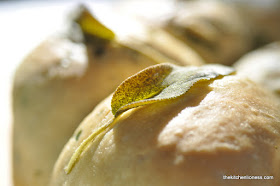A couple of years ago, I came across a recipe for so-called 'Cowboy Cookies'. Needless to say that the recipe name attracted my attention, a bit like the 'Everything-but-the-Kitchen-Sink Cookies'. Although I am know to bake lots of different cookies following more traditional European recipes, I also love to bake big, chewy, chunky American-style cookies. To make a long cookie-baking story short, a couple of years ago, I started baking Cowboy Cookies and the kids loved them. Then, on a regular basis, I got requests for Cowboy Cookies. This past week I got a request for Birthday Cowboy Cookies AND a I was handed a new recipe. It seems the birthday girl was attracted to the fun title of the cookies for 'Texas Governor’s Mansion Cowboy Cookies'. Why not try a new recipe, I said, I was going to bake Cowboy Cookies (and a lovely cake) for the birthday anyways.
When doing my research on these cookies, I learned that former First Lady of the United States, Laura Bush is credited with creating this version of Cowboy Cookies. And the story behind her now famous Cowboy Cookie recipe is rather interesting, to say the least.
It seems that it was already commonplace for US presidential candidates to release family recipes during their campaign, it is thought 'to help humanize the candidates and also allows them to promote family values'. But public contests pitting the baking ability of potential first ladies against each other are relatively new. They began in 1992 when Hillary Rodham Clinton got everyone talking with her infamous cookie comment, discussing working as a lawyer while her husband Bill Clinton was Governor of Arkansas:
''I suppose I could have stayed home and baked cookies and had teas,'' she said. ''But what I decided to do was pursue my profession, which I entered before my husband was in public life.''
She was probaly trying to make the point that in 1992, women had other options. But instead, it appears from what I have read, that her remark created a so-called 'reactionary cookie contest', the brainchild of Family Circle Magazine (a US home magazine that commenced publication in 1932, with British as well as Australian editions) which published her chocolate chip recipe and one from Barbara Bush, asking readers to try baking both and then vote on their favorite. Interestingly, the results of the bake-off have almost always predicted the winner of the US presidential election.
Be that as it may, in the first First Lady bake-off in 1992, the recipe for Hillary Clinton’s chocolate chip cookies beat out the one from Barbara Bush, and again in 1996, Hillary’s chocolate chip recipe won over Elizabeth Dole’s Pecan Roll cookies. In 2000, Laura Bush debuted above Texas Governor’s Mansion Cowboy Cookies, and as expected, they beat our Tipper Gore’s Ginger Snap recipe. Then in 2004 Laura Bush switched up her original recipe during her husband’s second presidential campaign to a similar oatmeal chocolate chunk recipe, but it’s her first Cowboy Cookie recipe, the Texas Governor’s Mansion Cowboy Cookies that’s become so beloved and famous - there are countless articles and blog entries written on the subject of these cookies.
Here is my personal adaptation of Laura Bush's winning recipe. As a European baker I would classify these cookies as classic chocolate chip cookies (chocolate chips always mean chunks of dark Belgian chocolate) fortified with lots of old-fashioned oats (the coarse variety), chopped pecans, shredded coconut (coarse shredds) as well as sweet cinnamon.
Texas Governor’s Mansion Cowboy Cookies
(Adapted from Laura Bush)
Ingredients
- 3 cups all-purpose flour (390g)
- 1 tablespoon baking powder
- 1 tablespoon baking soda
- 1 tablespoon ground cinnamon (I like to use 'Ceylon cinnamon')
- 1 teaspoon salt (I like to use fine sea salt)
- 1 1/2 cups (3 sticks) unsalted butter, at room temperature (340g)
- 1 1/2 cups granulated sugar (300g - I like to use superfine baking sugar)
- 1 1/2 cups light-brown sugar, packed (300g - I like to use fine cane sugar)
- 3 eggs (I used 'M', organic)
- 1 tablespoon vanilla (I used pure vanilla extract)
- 3 cup semisweet chocolate chips (400g - I used dark Belgian baking chocolate chunks)
- 3 cups old-fashioned rolled oats (270g - around here 'Kernige Haferflocken')
- 2 cups sweetened flake coconut (150g)
- 2 cups chopped pecans (220g)
Preparation
- Heat oven to 350°F ( 175°C).
- Mix flour, baking powder, baking soda, cinnamon and salt in bowl.
- In a very large bowl, beat butter with an electric mixer at medium speed until smooth and creamy. Gradually beat in sugars to combine thoroughly.
- Add eggs one at a time, beating after each. Beat in vanilla.
- Stir in flour mixture until just combined. Stir in chocolate chips, oats, coconut and pecans.
- For each cookie, drop 1/4 cup (I used an ice cream scoop instead) dough onto ungreased baking sheets (I lined my sheets with baking parchment), spacing 3 inches (7.5 cm) apart.
- Bake for 10 to 15 minutes, until edges are lightly browned; rotate sheets halfway through.
- Remove cookies to rack to cool (cool on the baking sheets before removing).
These are my minimal changes: the original recipe yields between 36 to 42 rather huge cookies, I halved the recipe and made considerably smaller cookies using a regular ice cream scoop. I also reduced the baking time to 10 to 12 minutes. Make sure to let them cool on the baking sheets before trying to remove them. I also lined my baking sheets with baking parchment instead of baking the cookies on ungreased baking sheets.
If you enjoy chewy cookies loaded with mix-ins like pecans (which I luckily food at my health food store), old-fashioned oats, large flaked coconut and dark chocolate (I splurged and used a wonderful deep, dark Belgian baking chocolate), these are your kind of cookies.



























